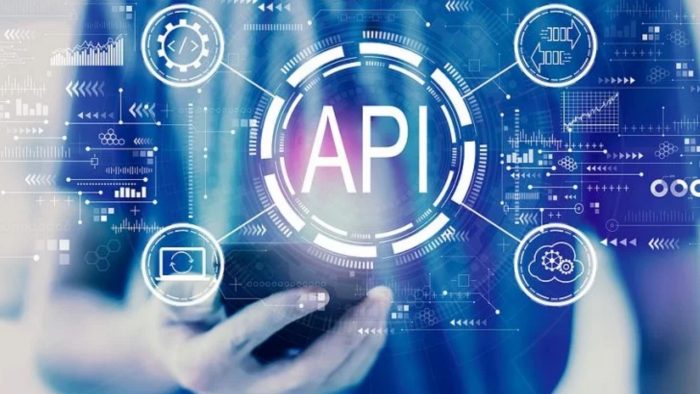
We can all agree that today’s modern and technologically advanced business setting is something every business needs to adapt to. In the last decade, and especially since the pandemic outbreak, everything has shifted to the digital world. Now, we spend more time online than ever before – doing shopping, learning, communicating, working, and finding entertainment. Therefore, web applications and APIs are a business foundation and one of their strongest tools.
However, web applications and APIs are also the weak spots attackers are targeting when trying to penetrate a business’ system. This article teaches you everything you need to know about protecting and securing your web applications and APIs and why a security solution such as Cloudbric WAF+ has to be a top priority for you.
Here’s how to keep your business, data, and customers secure.
Web Application & APIs Explained
Let’s start by explaining what exactly is implied by Web Application and API.
1. What is a Web Application?
By definition, a web application is a program that enables web browsers to perform different tasks over the internet. That means every business needs a web application if they want to sell online, communicate, or advertise. They’re used by everyone from the marketing team to the sales team.
A web application includes:
- all types of online forms
- shopping carts
- email programs
- file conversion & scanning
- video and image editing
- spreadsheets
That means that Gmail, Google Docs, and Dropbox are all web applications.
2. What are APIs?
API stands for application programming interface which simply means a program that allows applications to communicate. It’s the necessary connection between two or more applications, devices, businesses, and customers.
For instance, when you’re paying with PayPal directly on the e-commerce website, you’re doing it through an API.
Importance of Web Application & API Protection
As you can see, it would be impossible to run any business successfully, without using web applications and APIs. But, this is the reason why cyber attackers are using them as breach points for reaching your confidential data or harming your business.
Therefore, protecting your web applications and APIs is crucial for securing your business and running it completely safe.
But standard security solutions are not effective for protecting your business data from cyber criminals. This is why you need a specialized solution for Web Application and API Protection (WAAP).
Ultimate Guide to Web Application & API Protection
Now that you understand the importance of Web Application and API protection, it’s time to look at some of the best practices you need to embrace. Here’s how to keep your business data protected at all times.
1. Advanced Authentication & Authorization
The simplest solutions are always the best. So, start with proper advanced authentication and authorization.
Simply put, you need to determine the identity of the end-user and make sure they’re granted the access they’re requesting. By doing so, you’re protecting your data without disturbing your customers in any way. You’ll keep your business safe from different types of broken authorization and authentication, as well as from sensitive data exposure.
Choose a solution such as the TLS protocol, OAuth, or OpenID Connect.
2. Built-In Automation
When you’re using a protection system to keep your APIs and Web Application safe, you need to be aware that changes are happening constantly.
Both the applications you’re protecting and the threats that they’re facing are changing. They’re evolving, becoming stronger or weaker, and developing new features.
To make sure you’ve got your security covered, no matter the changes, you need to have built-in automation in your security system. It will learn on its own by collecting data and automatically adapting to all changes that happen. This will ensure you’re completely safe.
3. Personalized Protection
Let’s say your security system needs to protect a large number of different applications. They differ in their purpose, users, and weaknesses. This means that each one has a specific window that a cyber attacker might be able to open.
This is why it’s smart to have personalized protection.
This type of protection system will monitor each application separately, and keep track of its activity, data input, and output, and learn how to provide the best protection.
4. DDoS Protection
Distributed Denial-of-Service (DDoS) attacks are among the most common and dangerous types of attacks that web applications and APIs are facing. This is due to the rise of the Internet of Things (IoT) and cloud computing.
You need to ensure you’re protected specifically against these attacks by using security systems that offer such protection.
5. Have a Managed Security System
Finally, you should consider getting a professionally managed security system, such as the one offered by Cloudbric. Why? Because it covers all of the above-mentioned practices and more.
It will help you fight against DDoS attacks, SQL injections, website defacement, and other security threats and risks.
The information we’ve covered above can help you write a security plan for your business. If you need help with this writing assignment, professional thesis writers can help you out. Look for them at a credible writing service.
Final Thoughts
Web Application and Web Protection is crucial for maintaining a steady flow of your business and protecting yourself as well as your customers. It’s important to have a solid strategy on how to handle it, and a managed security system might be your best option.
Hopefully, this article helped you realize the importance of proper security for your business. Consider one of the Cloudbric solutions that can cover all potential threats your business might be facing.





